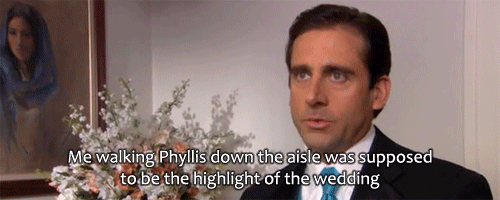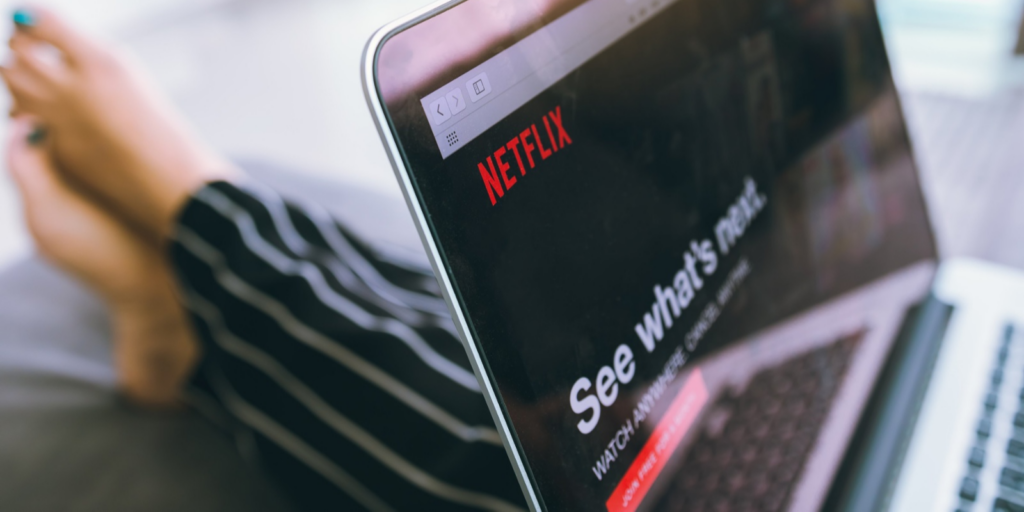Unfortunately, Netflix recently announced that they will no longer carry The Office starting in 2021. Not to brag or anything, but because I’ve been a fan of The Office since the beginning, I can rely on my trusty collection of old-school DVDs to get my fix. In case you aren’t quite on that level of fandom, here’s a summary: Michael Scott (played by Steve Carell) is the boss at Dunder Mifflin, a paper company in Scranton, PA. The show is designed to portray everyday people working in an everyday office in the midst of everyday life.
One element that makes the show so hilarious is the inclusion of all these cringe-worthy moments that give viewers a healthy dose of second-hand embarrassment. Because this show is based in an office environment, however, it’s easy to take bits and pieces of the characters’ actions, mannerisms, and struggles and apply them to public relations. That being said, here are 5 PR “Don’ts” I’ve gleaned from binge-watching The Office:
5 PR Don’ts I Learned From The Office
“Keep the main thing the main thing.”
There are no shortage of Office episodes that leave you painfully comfortable, but one that stands out is the installment titled, “Phyllis’s Wedding.” Everyone knows the bride is supposed to be the main focus of any wedding day, but of course, Michael spends the day trying to take center stage. At one point, he even stands next to the groomsmen and continuously tries to announce the couple as husband and wife…before the wedding officiant has that opportunity.

Whether you’re writing a press release, a media pitch or even an email, all messaging needs to stay on track. One of my college professors constantly preached to us that we should take care to “keep the main thing the main thing.” A press release should be about one message, one announcement, one story. Similarly, a media pitch should be tailored to a specific editor about one product or brand. Your messages will resonate better with readers if they’re only being asked to focus on one thing.
Set realistic expectations
When Michael finds out he didn’t get invited to the big launch party by corporate, he pulls in Angela (head of the accounting department) to throw a “bigger, better party” in the Scranton office. Angela had already had a nice, modest party planned, complete with snacks and a banner, but Michael demands that Angela scratch everything and get “beer, light beer, streamers, orchids, better lighting, something made of ice, pizza with mushrooms, pizza without mushrooms, white pizza, chocolate, someone famous, cool music, confetti, and go-go dancers”—and in less than an hour.
Even without sitting on my couch watching this episode, just thinking about that scenario has me feeling stressed on Angela’s behalf: there are few things more frustrating than differing expectations on your team, which often results in unmet expectations. (On that note: here’s a quick guide to setting realistic goals). It’s true that PR goals can be difficult to set—as well as measure—because often they are more qualitative than quantitative. However, setting goals for PR is both important and possible. Here are a few quick tips to help:
Tips for Setting PR Goals
- Teamwork makes the dream work: Make sure your whole team is looped in so it’s easier to clear up any miscommunication and ensure everyone is on the same page.
- Look back: To set realistic goals, you need to determine what is feasible based on what has, or has not, worked in the past.
- Look forward: Are there any promotions coming up, any trends that your brand may be able to capitalize on, that could help garner media placements and impressions?
- Reevaluate: Continuously checking in on your goals is the best way to stay on top of what is expected—don’t get so focused on the nitty-gritty of each day that you let goals become an afterthought!
Choose your influencers and partners wisely
If you’ve seen even one episode of The Office, you’ll pick up on the fact that Jim (a sales representative) takes any given opportunity to prank Dwight (another salesman). For instance, Jim put Dwight’s stapler in Jell-O, tricked him into thinking that he was being recruited by the CIA, put all of his belongings into the office vending machine…you get the point. So when Dwight is worried the company will have to downsize and that his job could be in jeopardy, he mistakenly chooses Jim as the coworker with whom he should form an alliance. And you’ll never guess what happened…Jim uses the opportunity to give Dwight additional grief instead.

Unlike Dwight, fresh produce marketers need to make sure we’re doing our due diligence when choosing influencer partners for our brands. That starts with doing plenty of research on each influencer before reaching out, as well as thoroughly considering investing your current audience (and target audience), especially on social media. Once you have an in-depth understanding of your brand’s current—and prospective—audience, you’ll have a much more focused, narrowed pool of influencers to consider. Once you’ve found a few options, don’t be ashamed to “stalk” their social profiles and past content! Review for any blurry or otherwise low-quality photos, check for other sponsorships to see if they’ve positioned the brand well, check for any captions or messaging that wouldn’t align with your brand, etc.
Influencer partnerships are most successful when your brand or product is a natural fit into each influencer’s content. (i.e. if someone posts about Oreos every single day, they may not be the most natural fit for fresh produce brand partnerships.) Some questions to consider when looking for an influencer:
- Would they be a trustworthy partner?
- What is their engagement rate? Are people interacting with the influencer?
- Does your product or brand authentically fit into their content?
- Does their audience fit your target audience, and/or the audience you’re aspiring to reach?
Good things come to those who wait
As you’ve likely gathered by now, Michael Scott is a pretty impulsive guy. While on some occasions his excitement is endearing, other times it’s just. so. awkward. Like when he proposes to his girlfriend Carol in front of an entire auditorium of people—after only nine dates. Carol, who was clearly caught off-guard, asks if they can talk about it in private, leaving everyone cackling at Michael’s alarmed face. What’s the lesson here? Patience is a virtue, and that most definitely applies to PR!
While building relationships with media contacts is easily the best way to ensure PR wins for your brand, know that you can’t expect these relationships to be built overnight (tip: follow-up emails are a great way to stay in touch!). Furthermore, remember that building a positive brand reputation takes time. Sure, sending out a press release might ensure some quick coverage, but in order for your brand to be seen as the leader, go-to contact, spokesperson, expert, or whatever else your goal may be, expect to need patience. Not only do “good things come to those who wait,” they come to those who work.
Have a crisis communication plan on hand
When I think about specific PR fails in The Office, the “Product Recall” episode in season three immediately comes to mind. Here’s what happens: Dunder Mifflin accidentally sends paper bearing an inappropriate watermark to a high school for use in their prom invitations. Michael goes into full-on crisis mode, reassigning accounting to handle customer service, creating an apology video, and alerting the media to come out for an interview. To be fair, he did have a crisis communication plan (link to related Core post), but the strategy isn’t exactly what we would recommend.
While we commend Michael for attempting to control the message by reaching out to the media, there are some instances when alerting the media is unnecessary. (We give Pam credit for the effort, since she tries valiantly to guide Michael by saying, “I really think this is going to blow over in a week or two…”) In many cases, like this one, reaching out to the media can make a bigger deal out of the situation than necessary. Having a press release written in case it’s needed is the best practice to be prepared without shouting “fire!”
First thing’s first: a crisis communication plan needs to be created before a crisis actually hits. It’s hard to make clear, concise decisions in the middle of chaos, so being able to utilize your crisis communication plan as a guideline will be key for staying on track and focused (keeping the main thing the main thing).

Learning from others’ mistakes is an easy way to set ourselves up for success. There are numerous things The Office teaches us to do well, but Michael Scott said it best when he said, “Actually, I probably learn more from the losers.” I wonder what the show would be like if Dunder Mifflin had a public relations department…
Have something to add? Leave us a comment below or reach out to us on Twitter @TheCoreBlog!
{{cta(‘32699105-97e4-4e13-a0af-fc31e29ca446’)}}
